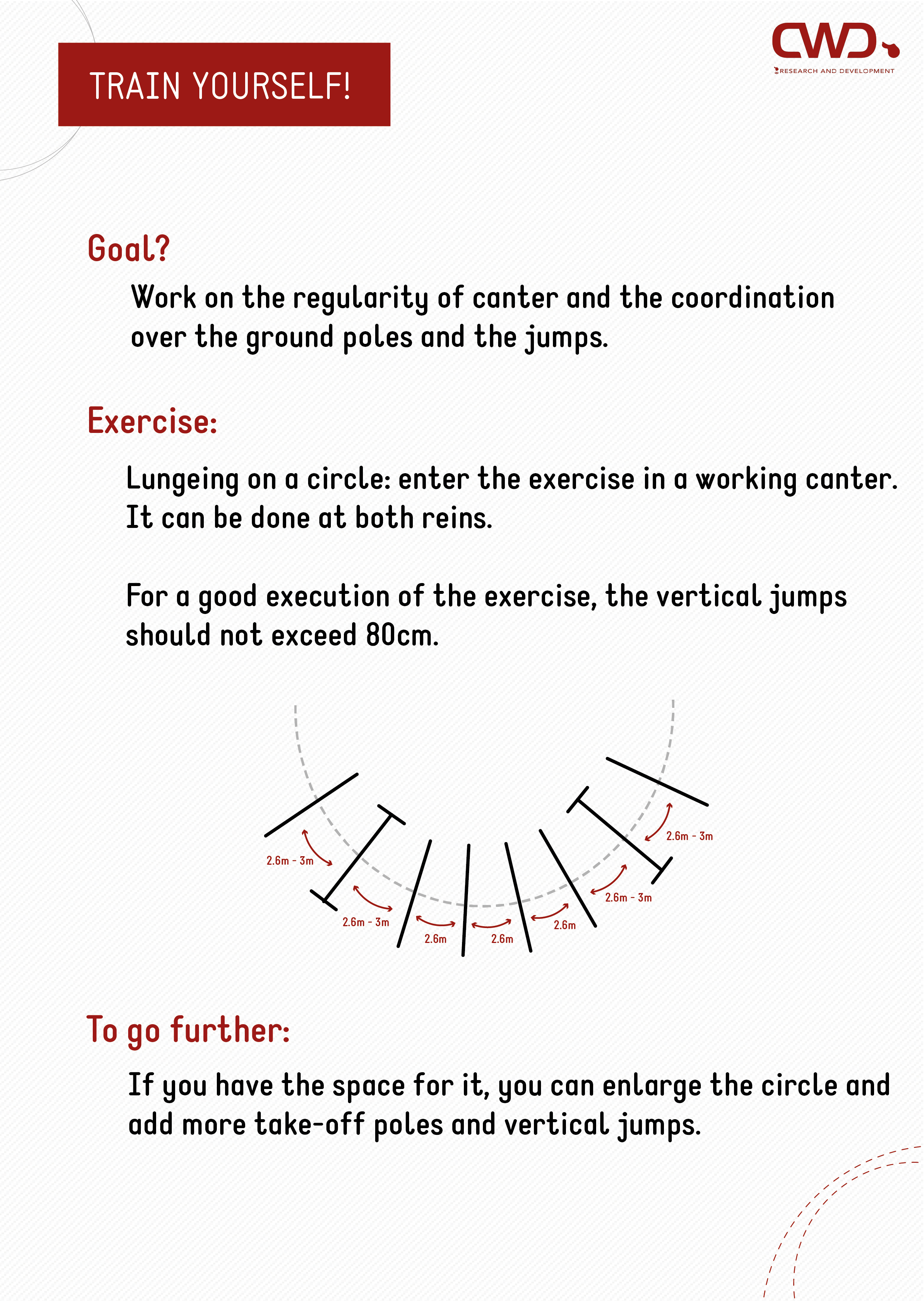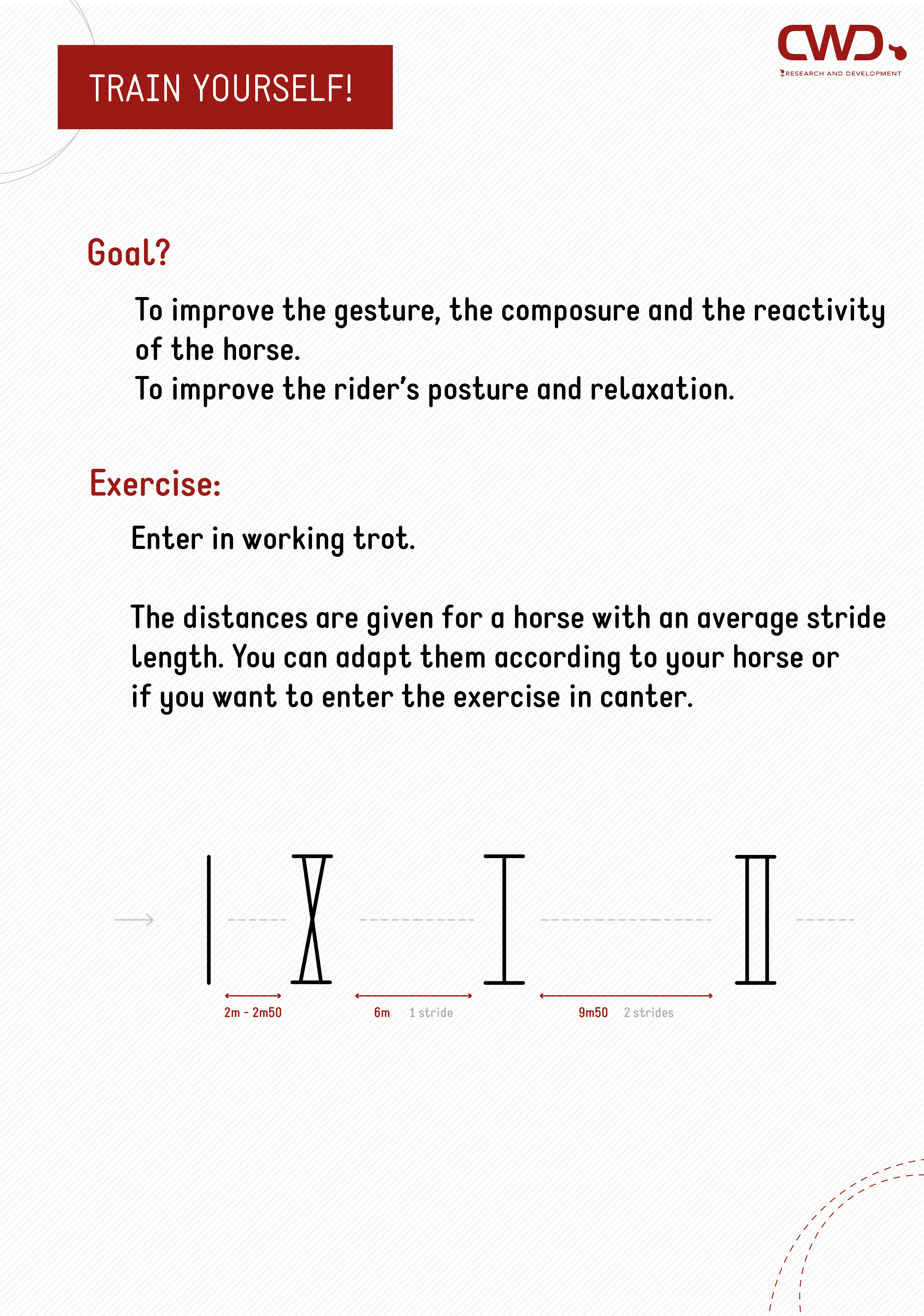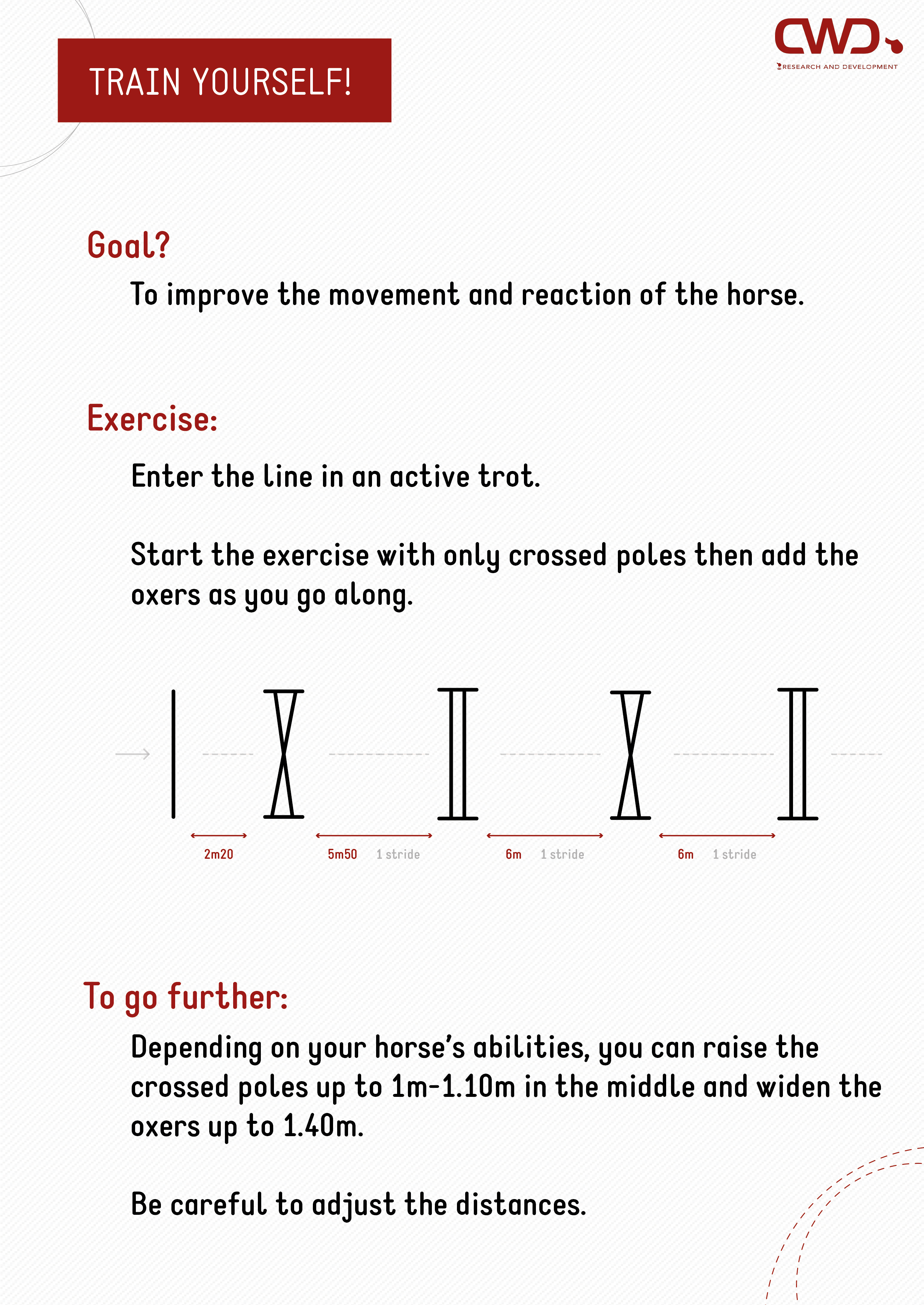Only US$ 500 left to enjoy free shipping!
No products
Only US$ 500 left to enjoy free shipping!
No products
Suppleness, coordination, harmony, release and posture can all be improved through good gymnastic training. In this article we explain everything about gymnastics, with various exercises to help you train!
Gymnastics training allows you to improve certain physical aspects of the horse such as coordination and the musculoskeletal system in general.
The advantage is that it can be done as part of jumping training, as well as on the flat or during lunging. There are many exercises to help you to meet the goals you have set for yourself and your horse.
However, gymnastics for the horse means gymnastics for the rider as well. Indeed, some exercises also benefit riders by teaching them to work in harmony with their horse. While the horse needs to improve technique and trajectory, the rider can focus on their own physical processes and work on posture and relaxation.
Gymnastics training is thus beneficial for both horse and rider. They can work together (or separately) on specific points such as flexibility, suppleness, openness, confidence, relaxation, muscle toning, and of course, posture.
The R&D team has selected some exercises, especially for you, to gymnasticize your horse – as well as yourself – on flat training and jumping.
Keep in mind that even the exercises that feel simple for you can be difficult to execute. Practice the exercises according to your abilities and those of your horse!
It is common to see young horses, when they start learning how to jump, are not always in tune with their movements. This is why free jumps are a good exercise for a young horse. Indeed, it allows him to approach a single jump (or several small ones) in an optimal way, with calm and without the rider’s weight.
The young horse will be able to understand the functioning of its body and balance throughout the whole jump, from push-off to landing. Thus, it will be easier for him to learn about some key parameters that are essential for its future learning. He will also be able to approach a jump with more confidence, even when carrying a rider.
Be careful, however, not to train too much with this type of exercises. Indeed, jumps are very demanding on the ligaments, muscles and bones of young horses, who have not yet finished growing.

They are very complete and diversified exercises that help to develop the horse’s muscles, improve suppleness and responsiveness. Working on lateral movements also helps riders to achieve more suppleness and better coordination of their aids.
During lateral work, the horse’s legs move away from and towards the body. All movements in which the horse moves towards one side are called lateral movements. They include leg yield, shoulder-in, shoulder-fore, travers and even half-pass.

Lateral work mobilizes the adductor and abductor muscles in the hips and shoulders, as well as the extensor muscles that allows the horse to move its legs forward, and the flexor muscles in his neck. The pectoral muscles will also be solicited when the horse crosses its forelegs. This is highly beneficial for showjumping horses who need these muscles to support them when landing after a jump.

This type of training can also be quite interesting to gymnasticize your horse.Here the horse has more freedom to move; but at the same time, you can still give additional indications through the lunge.
There are many exercises that can be done while lunging. Depending on the exercise, it can be performed at all three gaits and at each rein. It also requires the horse to take more responsibility. Indeed, he will have to analyze the exercise and adjust its gait, impulsion and balance. The main advantage of these types of gymnastics exercises is that you can repeat them afterwards during mounted work.
The exercise we propose is particularly useful for horses that are often experiencing stress and tend to apprehend jumps or rush on them. This exercise is given with distances for a horse at canter with an average stride length. You can change the distances to better fit your horse, or if you want to do the exercise at trot instead.

This set-up gives horses a specific path, compelling them to decompose their jumps in a relaxed manner. The ground poles at push-off and landing will “steady” the horses in the exercise; preventing them from rushing at the approach or running off after landing. The ground poles between the two jumps ensure that your horse keeps a steady pace.
During this exercise, your job is to keep a soft and even connection on the lunge. Your hand indicates the direction to the horse, resulting in a slight flexion of his neck. If your aids are too strong or your hand too hard on the lunge, there is a danger that your horse will lean on the bit and tighten up.
There are many exercises and set-up options to work on gymnastics, reactivity and coordination of both horse and rider while jumping.
The most well-known are gymnastics jumping lines. They allow to work on the horse’s impulsion and technique, but also on the rider’s posture and relaxation. During this type of exercises, the horse mobilizes its entire topline, extending it through contact with the bit. These exercises require a lot of engagement from the horse. He must put his weight on its hindquarters in order to maintain impulsion and balance during the jumps.
These gymnastics lines can also be done at trot with a ground pole placed before take-off, after which the horse automatically transitions to canter.

The Bardinet line, named after the former French national trainer Jean-Paul Bardinet, is another good example of gymnastics jumping lines. This line is particularly interesting for gymnastics because it alternates cross rails and oxer jumps. Here, the horse must recollect his pace on the cross rails (shortened stride and raise of the shoulders), and then stretch and articulate his back to jump over the oxers.
This exercise should be done step by step: first with cross rails and poles, and then adding the oxers gradually.

In order to not “trick” the horse in the short distances of the Bardinet line, the rider must remain very discreet. He has to keep his legs at a light contact and start the exercise only if his horse is calm with a light contact on the bit.
The data collected in live by the iPULSE will give you indications about your speed and pace to help you during these exercises. You can also monitor your horse’s heart rate to help determine if the exercises are adapted to his schooling level.